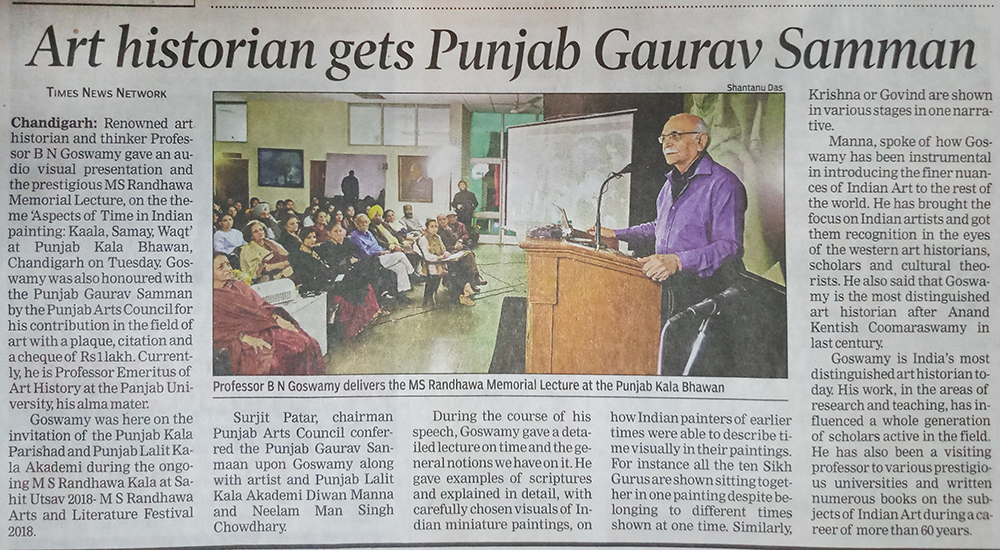TNN | Feb 7, 2018, 09:27 IST
CHANDIGARH: Renowned art historian and thinker Professor BN Goswamy gave an audio visual presentation and the prestigious MS Randhawa Memnorial Lecture, on the theme ‘Aspects of Time in Indian painting: Kaala, Samay, Waqt’ at Punjab Kala Bhawan, Chandigarh on Tuesday. Goswamy was also honoured with the Punjab Gaurav Sanmaan by the Punjab Arts Council for his contribution in the field of art with a plaque, citation and a cheque of Rs 1 lakh.
Goswamy was here on the invitation of the Punjab Kala Parishad and Punjab Lalit Kala Akademi during the ongoing MS Randhawa Kala at Sahit Utsav 2018- MS Randhawa Arts and Literature Festival 2018.
Surjit Patar, chairman Punjab Arts Council conferred the Punjab Gaurav Sanmaan upon Goswamy along with artist and Punjab Lalit Kala Akademi Diwan Manna and Neelam Man Singh Chowdhary.
During the course of his speech, Goswamy gave a detailed lecture on time and the general notions we have on it. He gave examples of scriptures and explained in detail, with carefully chosen visuals of Indian miniature paintings, on how Indian painters of earlier times were able to describe time visually in their paintings. For instance all the ten Sikh Gurus are shown sitting together in one painting despite belonging to different times shown at one time. Similarly, Krishna or Govind are shown in various stages in one narrative.
Manna, spoke of how Goswamy has been instrumental in introducing the finer nuances of Indian Art to the rest of the world. He has brought the focus on Indian artists and got them recognition in the eyes of the western art historians, scholars and cultural theorists. He also said that Goswamy is the most distinguished art historian after Anand Kentish Coomaraswamy in last century.
Goswamy is India’s most distinguished art historian today. His work, in the areas of research and teaching, has influenced a whole generation of scholars active in the field. He has pioneered different ways of seeing, and thinking about, the art of the past, and established clear new paradigms in the area of art historical research. It is as a result of his ceaseless efforts that the Indian artist of the past has begun slowly to emerge from the dense fog of anonymity, and to be recognized as a thinking individual, capable of, and interested in, taking creative decisions.
He has also been a visiting professor to various prestigious universities the world over and written numerous books on the subjects of Indian Art during a distinguished career of more than 60 years. Currently, he is Professor Emeritus of Art History at the Panjab University, his alma mater.

